
More than 18 months ago, I wrote a blog post about plans for a new mobile app dedicated to audio. In “The New York Times Is Wisely Experimenting With A Standalone Mobile App,” I talked about how the multi-media giant released a beta version of a new app, dedicated to audio.
At the time I wrote that the Times wanted to showcase their audio content, rather than having it get lost amidst all their other material, stating:
“Rather than having its great audio programming and features languishing on a content-heavy, bloated app, a dedicated mobile experience is where they’re heading.”
At that time, Stephanie Preiss, VP of TV and audio for the Times explained going the standalone app route seemed to make sense:
“(The audio content is) there, but it’s not a central or signature part of what we present to you. That’s out of sync with how we have scaled and grown our audio journalism over the last several years.”
But would it work? Since that post, the Times has tested its concept, the efficacy of an app dedicated to their audio content, rather than glomming it all into their standard app.
For nearly the past 15 years, we’ve supported standalone apps for great brands, rather than “umbrella apps” containing many, many stations and seemingly infinite content. We’ve always thought of these “aggregator apps” akin to putting all one’s eggs in one basket, the greatest stations right alongside the also-rans.
Our philosophy – great brands deserve their own dedicated apps – was tested in various Techsurveys, including this chart from the 2021 study:
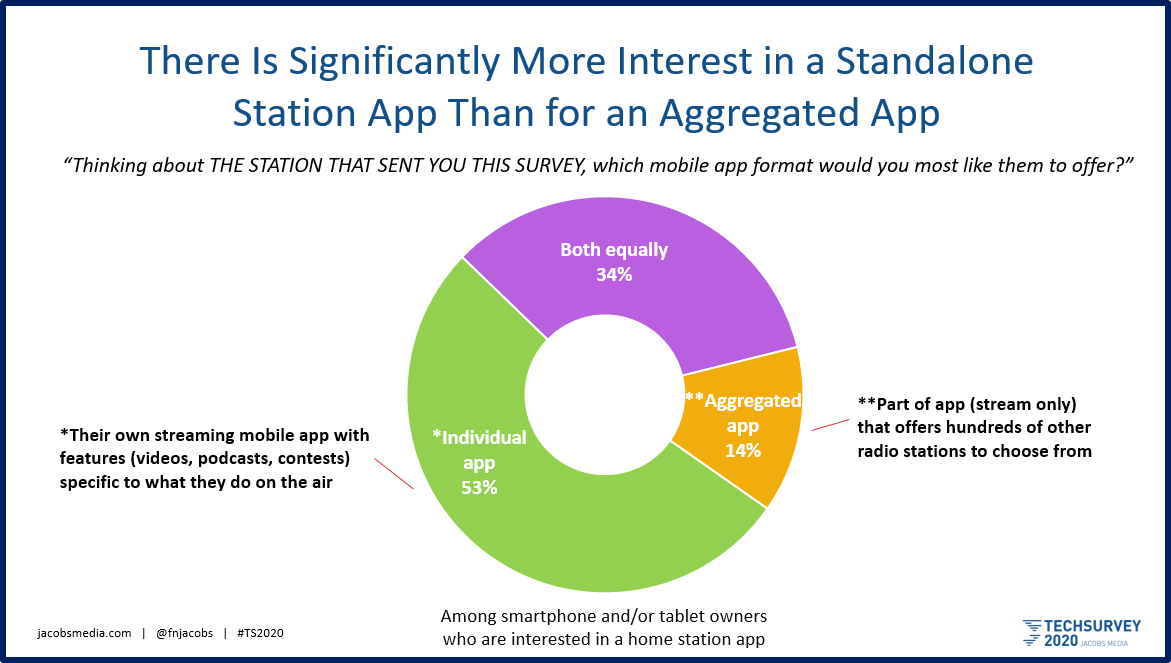
The wait is now over. Yesterday, the New York Times Audio app hit Apple’s App Store. (No word on an Android version, much to the chagrin of scores of commenters.)
In an announcement to its readership, the Times team revealed the strategy – to make the app its “audio front page.” As they explained,
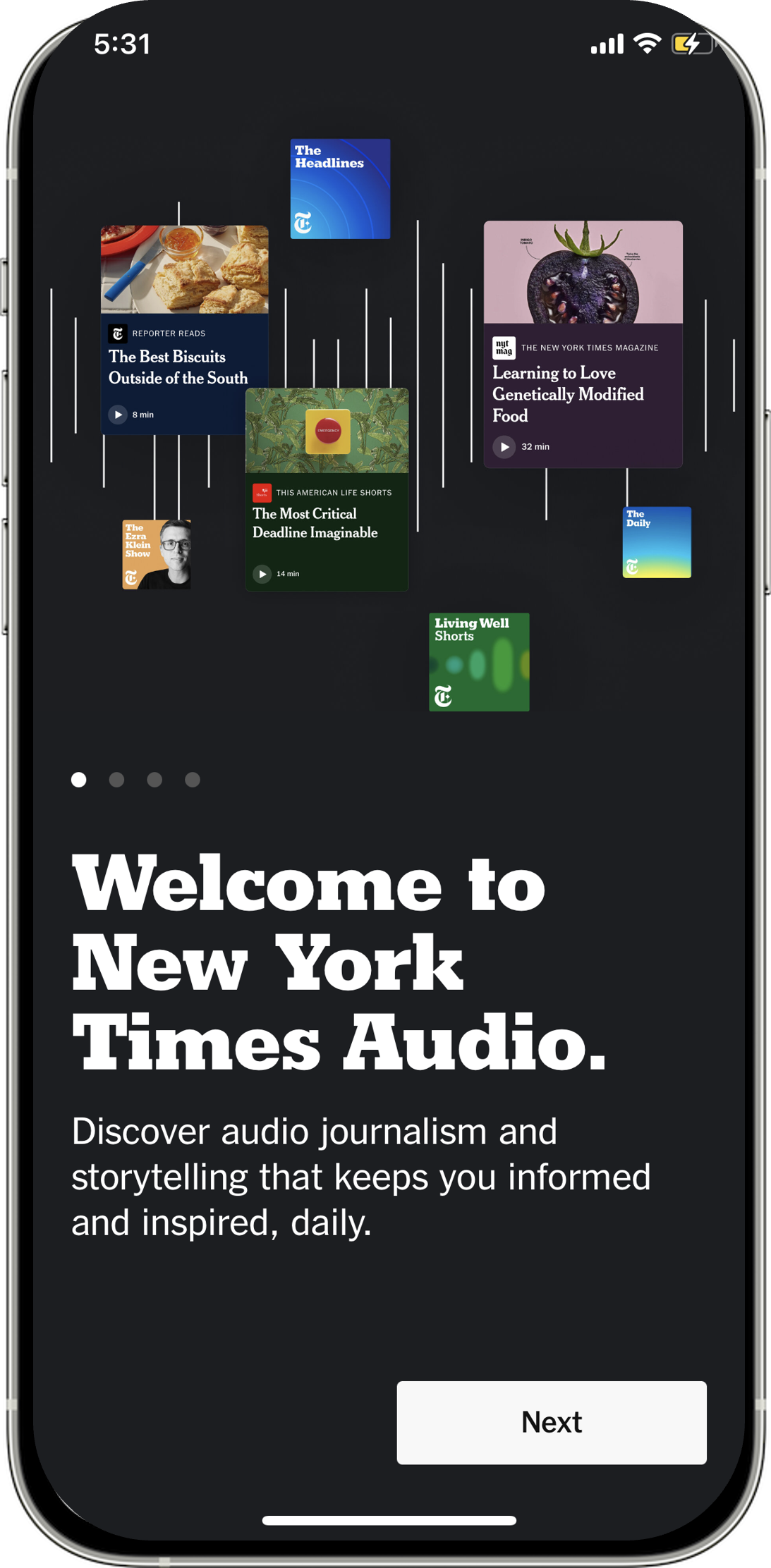 “Today, we’re thrilled to announce the launch of New York Times Audio, a new app that gathers our ever-growing roster of audio journalism in one place, so listeners can cut through the noise and find the stories that matter to them. Listeners will find podcasts hosted by our reporters, dispatches from our correspondents around the globe, cooking advice from our recipe authors and much, much more.”
“Today, we’re thrilled to announce the launch of New York Times Audio, a new app that gathers our ever-growing roster of audio journalism in one place, so listeners can cut through the noise and find the stories that matter to them. Listeners will find podcasts hosted by our reporters, dispatches from our correspondents around the globe, cooking advice from our recipe authors and much, much more.”
That’s right – its best audio content, all in one place. You may be familiar with “The Daily,” their wildly successful daily news podcast. Now there will also be “The Headlines,” a brief show (under 10 minutes) where reporters talk about the three top stories of the day. Sounds like a cool idea.
The app will contain a broad array of the Times’ audio products, including a new feature called “Reporter Reads” where the journalists who write the stories read them. (Sounds like something any radio station could do with the stories that appear on websites and apps.)
Even better, the Times has done its due diligence, testing the app’s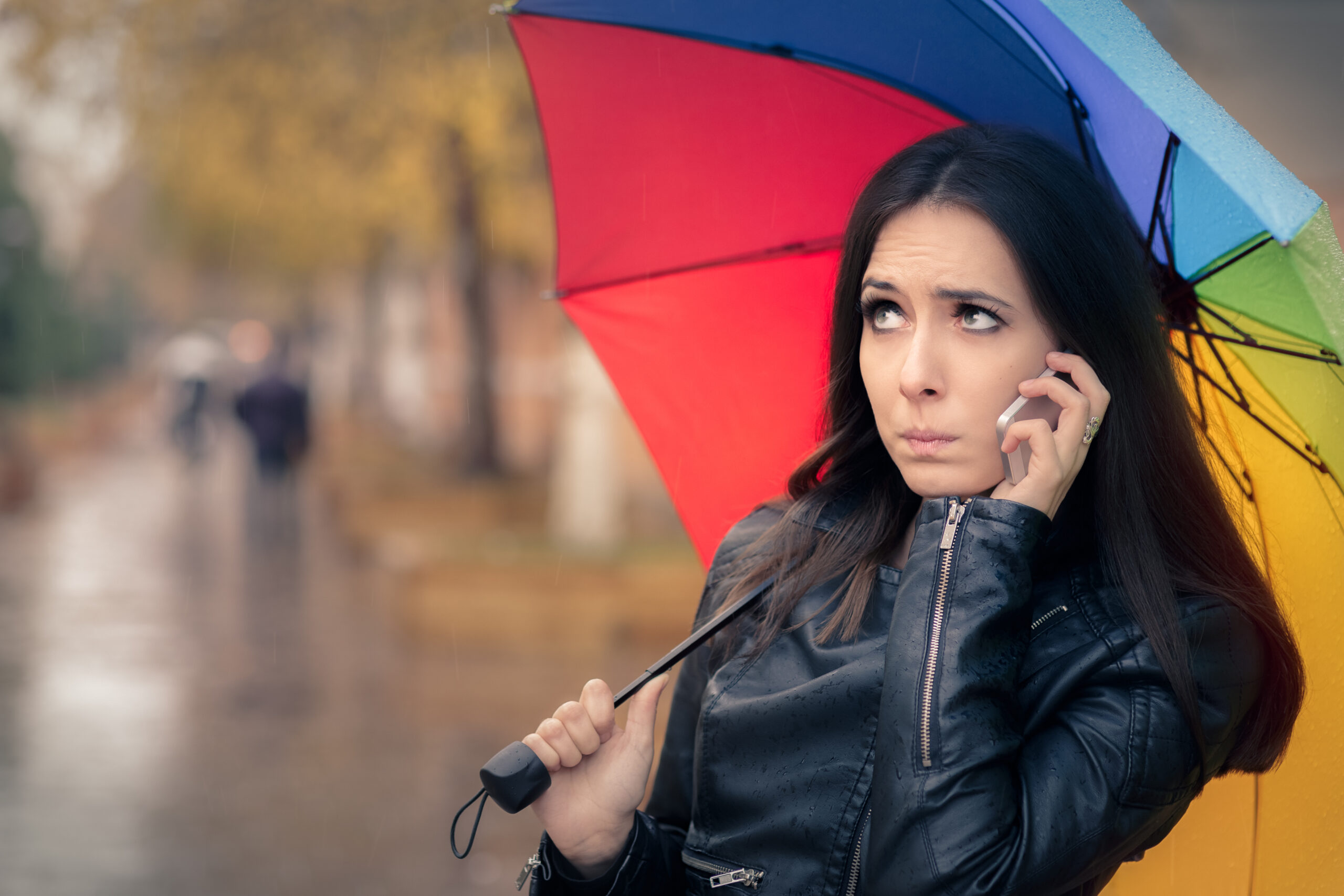 ability to showcase its best audio content. As we know, radio broadcasters have tried different tactics – standalone apps for its strong radio brands versus “umbrella apps” containing hundreds of stations as well as ancillary content.
ability to showcase its best audio content. As we know, radio broadcasters have tried different tactics – standalone apps for its strong radio brands versus “umbrella apps” containing hundreds of stations as well as ancillary content.
Unfortunately, the best stations often get lost in apps that aggregate all those brands, making for a clunky experience for listeners. These apps also limit the amount of features and content each station creates.
The Times model is proof of concept of apps designed to highlight the best content from a platform or brand. According to AdWeek’s Mark Stenberg, there’s a lot riding on the Times’ decision to break their audio assets away from their main app. In fact, he calls New York Times Audio “an ambitious product whose fate could influence the future of audio journalism.” It’s the first standalone app for the Times since they launched the Cooking app nearly a decade ago.
Sounds Profitable’s Brian Barletta calls it a core question in audio: whether regular app users will download a new app featuring podcasts. But Stephanie Preiss and the Times team have faith in their nearly 18 months of beta testing, a regimen we just don’t see in radio.
(If iHeart or Audacy ever decided to spin off some of their best radio brands away from their “umbrella apps,” the Times’ experiment with Audio may tell the tale.)
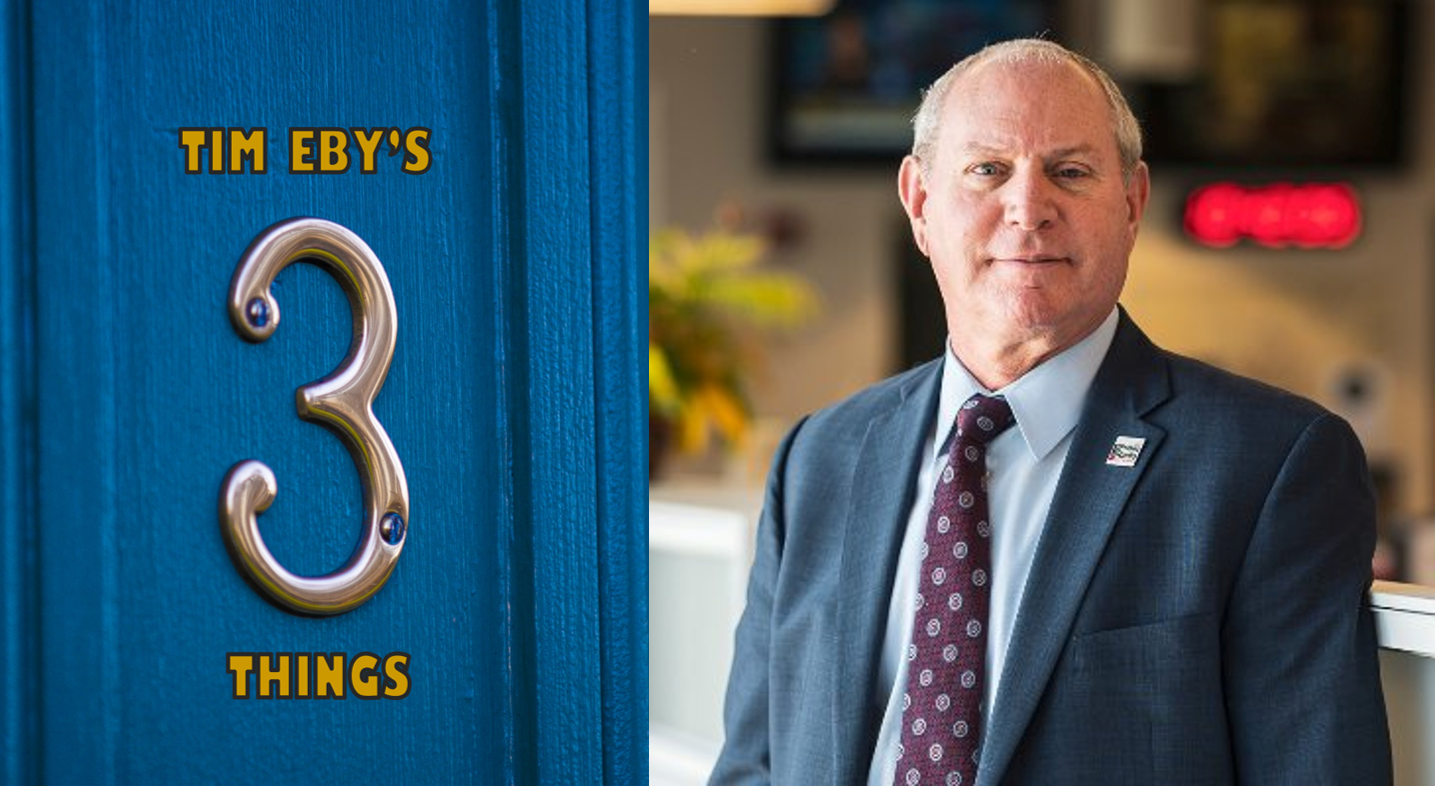 To give you an idea of just how much the Times researches its digital strategy, veteran public radio exec, Tim Eby, looked at the new Audio effort in his “Three Things” newsletter on Substack yesterday. As usual, it is well-written and well-thought out, and worth your time in any edition, but especially this one.
To give you an idea of just how much the Times researches its digital strategy, veteran public radio exec, Tim Eby, looked at the new Audio effort in his “Three Things” newsletter on Substack yesterday. As usual, it is well-written and well-thought out, and worth your time in any edition, but especially this one.
When its ambitious plans for Audio were first released, Tim quoted Alex Rainert, the Times’ chief of Audio Product & Design, who illustrated how his team views a “typical user day,” in much the same way we might in radio:
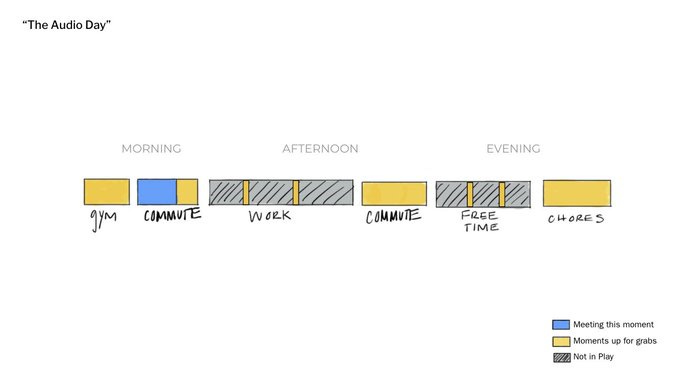
The morning commute (yes, just like in radio) is thought to be the core make-or-break moment for Audio. But the daypart segments in gold, labeled “up for grabs” represent opportunity for usage – the gym, the commute home, and chore time at night.
Tim also links to a story in Vanity Fair by Charlotte Klein whose title ought to grab the attention of every radio programmer:
“How Do We Get Every Second of Your Day?”
(When I first got into radio in the 70’s, that’s the way we used to think about 6a-midnight, including the overnight hours which were “up for grabs” to use the Times’ term.)
One advantage of a standalone app for its audio content is that it makes discovery easier than it is on an “umbrella,” while also reinforcing habitual use. Of course, the other plus is a more focused subscriber product as well as the ability for Audio to offer its own targeted advertising inventory.
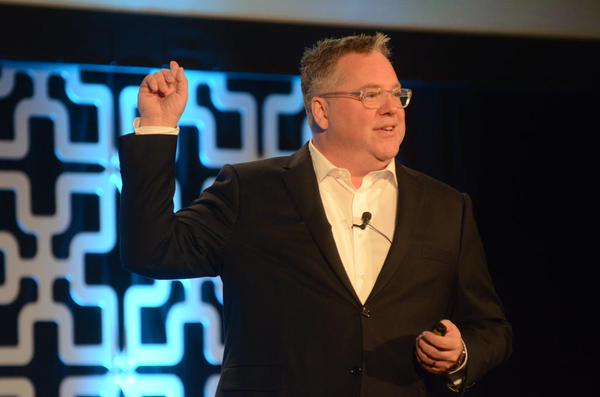 But the timing of this podcast app may be curious, given the bubble bursting in this once Wild West space.
But the timing of this podcast app may be curious, given the bubble bursting in this once Wild West space.
In fact, Klein quotes Eric Nuzum (pictured), former NPR programming mastermind:
“The dumb money is gone, the easy money has slowed down, and the smart money has seen some pullback.”
For most radio broadcasters, Audio is a fascinating example of strategic digital planning at its finest. That’s no guarantee of success, of course, but the Times has most certainly done its homework and failure won’t be due to mediocre content.
For iHeart, Audacy, and other radio companies that have gone the “umbrella app” route, it will provide an important case study they can learn from – at the New York Times’ expense.
For public radio stations and NPR specifically, however, it’s a clarion call that should have been answered back when the Times unveiled its plans. Back when it’s “The Daily” podcast was launched in 2017, NPR should have started connecting the audio dots.
And now, as Tim Eby points out, the trend seems to be offloading on-demand content to Spotify (as NPR announced in March) or Apple to help monetize. Public radio on-demand content and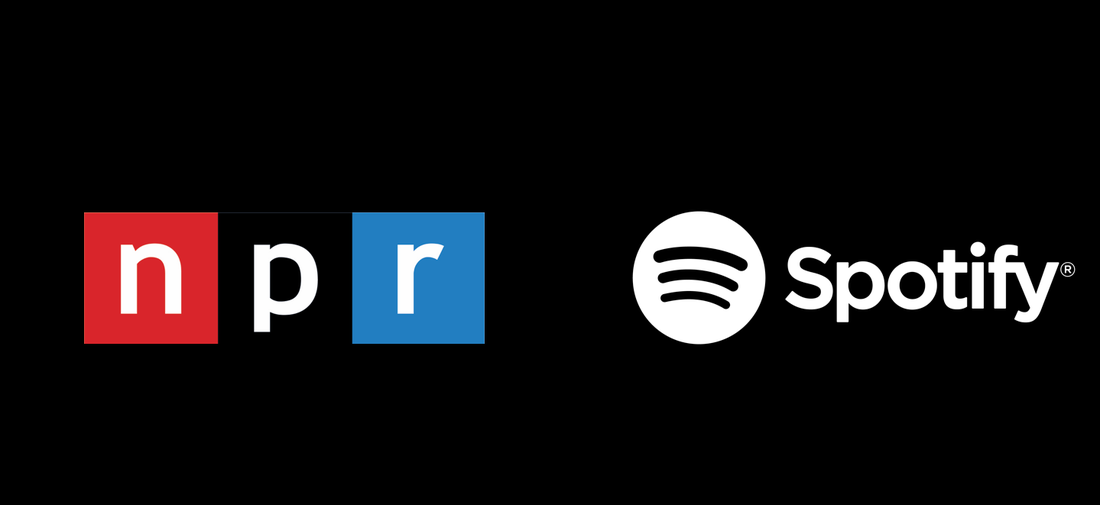 monetization is being seriously challenged by the Times which always seems to be a couple steps ahead. Eric Nuzum’s words should be ringing in all available ears.
monetization is being seriously challenged by the Times which always seems to be a couple steps ahead. Eric Nuzum’s words should be ringing in all available ears.
Tick tock.
Subscribe to Tim Eby’s “Three Things” here.
And thanks to Dave Beasing.
- In Radio, You Just Never Know - April 17, 2025
- The Secret To Making A Great Podcast (And Great Radio) - April 16, 2025
- I Read The (Local) News Today, Oh Boy! - April 15, 2025




Perhaps along similar lines is something that I’ve been contemplating ever since it was announced: Lee Harris’ departure from WINS in order to join Nexstar/NewsNation in an explicitly audio-focused executive position.
You make a great point about each station having their own app vs the aggregators.
To drill that point down even more. A sports station listener (is that what they are still called?) being able to find and highlight a show or conversation about their favorite team easily? The graphics and visual experience of the app would reinforce the marketing of the hosts/station.
I don’t know how much good have a separate app has for a classic rock station where “Stairway to Heaven” sounds the same no matter where you listen. Like the live version of the above song asked: “Does anybody remember laughter?”
Thanks, Jerry. For the Classic Rock station (or any other music station), hopefully there’s a morning show, plugged-in local personalities, and other assets. If not, there’s always Spotify.